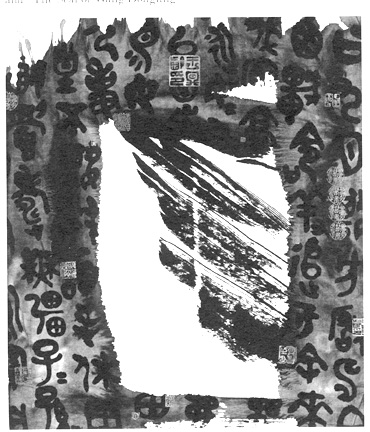

| With the liberalization of political control of the arts that occurred after the death of Mao in 1976, Chinese artists began experimenting with different media. Many were strongly influenced by modern art movements in the West. In 1985 a group of artists who identified themselves as modern calligraphers exhibited their work in Beijing, creating a considerable stir. Modern calligraphers abandon old rules of composition and brushwork to create works that seem more like modern paintings than traditional calligraphy. | |||

Sun Boxiang (b. 1934) was born into a peasant family, never attended high school, and worked for years at a factory. Today he is a well-known professional calligrapher. Like many calligraphers in earlier centuries, he draws inspiration from ancient calligraphy styles. The large character in the center of this piece is a reinterpretation of the character for "horse." |
|||
|
|||

Wang Dongling (b. 1945), both a painter and a calligrapher, teaches at the Chinese Art Academy and has spent time in the US studying modern Western art. The work to the left can be looked at as an abstract painting on top of which seal script characters have been written. What do the archaic style characters add to this painting? |
|||
"Mysterious Door" by Wang Dongling (1997)
|
|||
|
Can you see any traditional brushstrokes in the work at the right? If Chinese viewers cannot recognize any characters, should it still be called calligraphy? |
|||
|